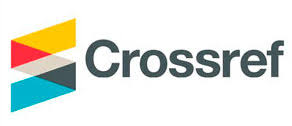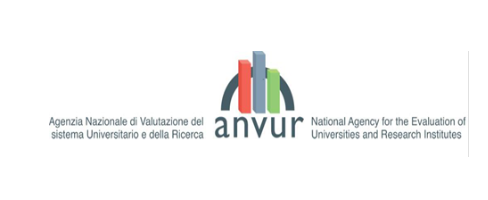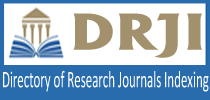INFLATION SURGE OF 2021-2023 AND MONETARY POLICY IN EASTERN EUROPEAN COUNTRIES
DOI:
https://doi.org/10.36004/nier.es.2023.1-08Keywords:
inflation response, Eastern Europe, monetary policy, inflation surgeAbstract
This article provides an in-depth analysis of the current global economic landscape, with a particular focus on Moldova, Ukraine, Romania, and Poland. The scope of this article is to examine central banks’ responses to the challenges posed by 2021-2023 inflation. The research employs a combination of scientific methods, including empirical analysis and quantitative research. It utilizes data from reputable sources like the World Bank, National Banks, and National Bureaus of Statistics to examine various economic indicators. Statistical software R is used for data analysis, including Cross-Correlation Function (CCF) analysis.
In response to rising inflation, Moldova and Ukraine raised interest rates significantly. Moldova later eased rates gradually, while Ukraine maintained a high rate to safeguard its currency. Romania and Poland, with stronger economies, saw milder rate hikes and less inflation increase compared to other Eastern European nations, adopting a cautious and delayed approach and still not reducing their base rates.
A critical aspect of the research is the implementation of cross-correlation function (CCF) analysis, which is used to explore the time-lagged correlations between different economic variables, such as the Base policy rate, Commodity price index and IPC. The analyses conducted have revealed two significant patterns: a deficiency in the proactive adjustment of base rates by central banks in response to inflation and the lead-lag relationship between ascending commodity prices and inflation. These findings underscore the cautious approach taken by central banks and their delayed response to the impact of external factors on inflation dynamics.
Downloads
References
Bańkowski, K., Bouabdallah, O., Checherita-Westphal, C., Freier, M., Jacquinot, P., & Muggenthaler, P. (2023). Fiscal policy and high inflation. Economic Bulletin Articles, 2. https://econpapers.repec.org/article/ecbecbart/2023_3a0002_3a1.htm
Bems, R., Caselli, F., Grigoli, F., & Gruss, B. (2020). Gains from anchoring inflation expectations: Evidence from the taper tantrum shock. Economics Letters, 188, 108820. https://doi.org/10.1016/j.econlet.2019.108820
Bernanke, B., Laubach, T., Mihskin, F., & Posen, A. (2001). Inflation Targeting: Lessons from the International Experience. Princeton: Princeton University Press.
Blanchard, O. (2019). Public Debt and Low Interest Rates. American Economic Review, 109(4), 1197-1229. https://doi.org/10.1257/aer.109.4.1197
Bolhuis,, M. A., Cramer, J. N., & Summers, L. H. (2022). Comparing Past and Present Inflation. National Bureau of Economic Research. IMF Working Paper, 30116, june, 2-42. https://doi.org/10.3386/w30116
Brunnermeier, M. (2023, March). Rethinking Monetary Policy in a Changing World. https://www.imf.org/en/Publications/fandd/issues/2023/03/rethinking-monetary-policy-in-a-changing-world-brunnermeier.
Carrière-Swallow, Y., Gruss, B., Magud, N. E., & Valencia, F. (2021). Monetary Policy Credibility and Exchange Rate Pass-Through. International Journal of Central Banking, september, 61-94. https://www.ijcb.org/journal/ijcb21q3a2.htm
Cecchetti, S., & Kim, J. (2004). Inflation Targeting, Price-Path Targeting, and Output Variability. Working Paper, 9672, 1-33. https://doi.org/10.3386/w9672
Chang, Y., Gómez-Rodríguez, F., & Hee Hong, G. (2022). The Effects of Economic Shocks on Heterogeneous Inflation Expectations. IMF Working Paper, 132, jule, 8-58. https://www.imf.org/en/Publications/WP/Issues/2022/07/01/The-Effects-of-Economic-Shocks-on-Heterogeneous-Inflation-Expectations-520274
Coombs, N., & Thiemann, M. (2022). Recentering central banks: Theorizing state-economy boundaries as central bank effects. Economy and Society, 51(4), 535-558. https://doi.org/10.1080/03085147.2022.2118450
Cui, L., Yue, S., Nghiem, X.-H., & Duan, M. (2023). Exploring the risk and economic vulnerability of global energy supply chain interruption in the context of Russo-Ukrainian war. Resources Policy, 81, march, 103373. https://doi.org/10.1016/j.resourpol.2023.103373
Dizioli, A., & Alvarez, J. A. (2023). How Costly Will Reining in Inflation Be? It Depends on How Rational We Are. IMF Working Papers, 021, 4-34. https://www.imf.org/en/Publications/WP/Issues/2023/02/03/How-Costly-Will-Reining-in-Inflation-Be-It-Depends-on-How-Rational-We-Are-529103
Dladla, P., & Malikane, C. (2022). Inflation dynamics in an emerging market: The case of South Africa. Economic Analysis and Policy, 73, 262-271. https://doi.org/10.1016/j.eap.2021.11.016
Evans, G. W., Honkapohja, H., & Mitra, K. (2022). Expectations, Stagnation and Fiscal Policy: A nonlinear analysis. International Economic Review, 63(3), 1397-1425. https://doi.org/10.1111/iere.12573
Gaspar, V., & Eyraud, L. (2017, April 19). Five Keys to a Smart Fiscal Policy. https://www.imf.org/en/Blogs/Articles/2017/04/19/five-keys-to-a-smart-fiscal-policy
Gopinath, G. (2023). Crisis and Monetary Policy. New Directions for Monetary Policy. Finance & Development, 60(1), 15-18. https://www.imf.org/-/media/Files/Publications/Fandd/Article/2023/March/FD0323-Monetary-Policy.ashx
Guénette, J.-D., Kenworthy, P., & Wheeler, C. (2022, April). Implications of the War in Ukraine for the Global Economy. https://documents1.worldbank.org/curated/en/099616504292238906/pdf/IDU00bdb5a770659b04adf09e600a2874f25479d.pdf
Ha, J., Kose, M., & Ohnsorge, F. (2022). From Low to High Inflation: Implications for Emerging Market and Developing Economies. https://doi.org/10.2139/ssrn.4074459
Hang Duong, T. (2022). Inflation targeting and economic performance over the crisis: evidence from emerging market economies. Asian Journal of Economics and Banking, 337-352. https://doi.org/10.1108/AJEB-05-2021-0054
Havranek, T., & Rusnák, M. (2013). Transmission Lags of Monetary Policy: A Meta-Analysis. William Davidson Institute Working Paper, 1038. https://doi.org/10.2139/ssrn.2188438
Hazlitt, H. (2008). Economics in One Lesson. Auburn, Alabama: Ludwig von Mises Institute. https://www.liberalstudies.ca/wp-content/uploads/2014/11/Economics-in-One-Lesson_2.pdf
Kocabasoglu-Hillmer, C., & Roden, S. (2023). Radical innovations as supply chain disruptions? A paradox between change and stability. Journal of Supply Chain Management, 59(3), 3-19. https://doi.org/10.1111/jscm.12299
Naseer, S., Khalid, S., Parveen, S., Abbass, K., Song, H., & Achim, M. (2022). COVID-19 outbreak: Impact on global economy. Frontiers in Public Health, 10, 1-13. https://doi.org/10.3389/fpubh.2022.1009393
Olaoye, O., Omokanmi, O., Tabash,, M., Olofinlade, S., & Ojelade, M. (2023). Soaring inflation in sub-Saharan Africa: A fiscal root? Quality&Quantity, may, 1-23. https://doi.org/10.1007/s11135-023-01682-z
Prokopowicz, D. (2022). The Postcovid Rise In Inflation: Coincidence Or The Result Of Misguided, Excessively Interventionist And Monetarist Economic Policies. International Journal Of New Economics And Social Sciences, 16(2), 105-148. https://doi.org/10.5604/01.3001.0016.3409
Rahbari, M., Arshadi Khamseh, A., & Sadati-Keneti, Y. (2023). Resilience strategies in coping to disruptions of wheat supply chain caused by the Russia–Ukraine war crisis: case study from an emerging economy. Kybernetes. doi:10.1108/K-12-2022-1728
Schnabel, I. (2023). Finding the right mix: monetary-fiscal interaction at times of high inflation*. SUERF Policy Note, 296, 1-16. https://www.suerf.org/docx/f_47b712717226fee1d3a663276dc82f20_59269_suerf.pdf
Svensson, L. E. (2020). Monetary Policy Strategies for the Federal Reserve. International Journal of Central Banking, 16(1), 133-193. https://www.ijcb.org/journal/ijcb2002_3.pdf















